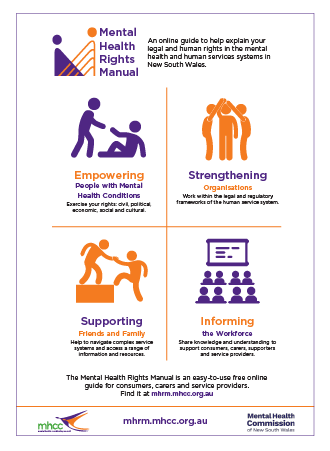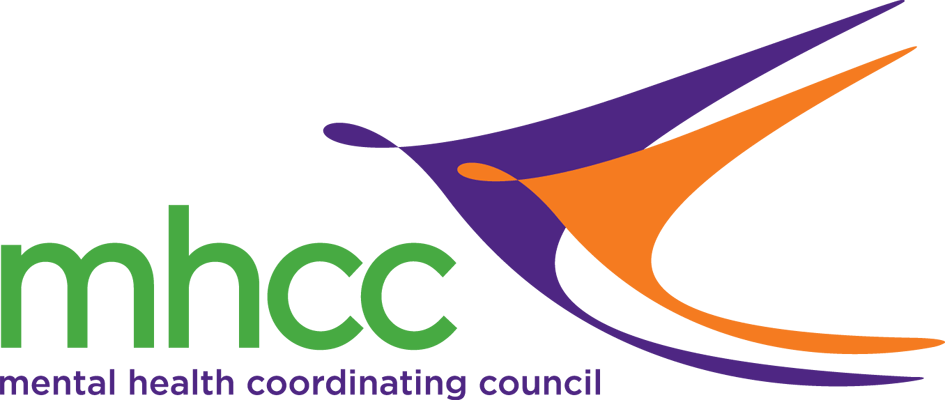
The Mental Health Rights Manual (the Manual) is designed to assist people living with mental health conditions, their carers, families and support persons. It deals with the relationship between the mental health and other human service systems including the many legal and regulatory matters that may affect people receiving or wishing to access services. The Manual is also useful to mental health and disabilityDisability is defined in the Disability Discrimination Act 1992 (Cth) as total or partial loss of the person’s bodily or mental functions; total or partial loss of a part of the body; the presence in the body of organisms causing disease or illness, capable of causing disease or illness; the malfunction, malformation or disfigurement of a part of the person’s body; a disorder or malfunction that results in the person learning differently from a person without the disorder or malfunction; a disorder, illness or disease that affects a person’s thought processes, perception of reality, emotions or judgment or that results in disturbed behaviour. More workers, peer and lay advocates and others who support people living with mental health conditions across the various service systems. It sets out to assist them to better understand and navigate the service system in NSW.
The Manual also explains the key international, national and state policy and organisational frameworks that regulate or influence mental health care, treatment and support in NSW, and it provides a guide to the key areas of law that impact people living with mental health conditions (consumers) and psychosocial disabilityPsychosocial disability is not about a diagnosis, it refers to the social and economic consequences related to living with a mental health condition. It is a recognised term used to describe the challenges, or limits, a person experiences in life that are related to their mental health condition. Not everyone living with a mental health condition has a psychosocial disability. More and their associates in NSW.
Consumers and their support persons can consult the Manual to try to work out what to do in the many and often stressful situations they encounter. The Manual includes information about contact and referral points across a wide range of relevant areas. This enables readers to obtain information and assistance quickly.
The Manual is written in plain English and aims where possible to be free from legal and medical jargon. Readers from a diversity of backgrounds should be able to access and understand its contents; assisted by the Manual’s new easy to navigate online format which enables readers to quickly search for a topic and information they are looking for.
The Manual is not intended for lawyers working in the mental health and disabilityDisability is defined in the Disability Discrimination Act 1992 (Cth) as total or partial loss of the person’s bodily or mental functions; total or partial loss of a part of the body; the presence in the body of organisms causing disease or illness, capable of causing disease or illness; the malfunction, malformation or disfigurement of a part of the person’s body; a disorder or malfunction that results in the person learning differently from a person without the disorder or malfunction; a disorder, illness or disease that affects a person’s thought processes, perception of reality, emotions or judgment or that results in disturbed behaviour. More fields who have access to the many resources produced by government and the relevant tribunals, which are all aimed at people with formal legal qualifications. Nevertheless, from time to time, lawyers will find the information in the Manual useful in terms of its broader context. Similarly, while mental health professionals will find many aspects of this Manual useful, the Manual is not written for them in the sense that it does not contain any clinical or diagnostic information.
However, we urge lawyers and clinicians who work with people living with mental health conditions to become familiar with the Manual so that they can direct them to it when they require information about their rights or other information and guidance across the mental health and human service systems. The Manual may also be a reference point to assist lawyers and clinicians to explain issues in plain-English with a minimum of legal and clinical jargon.
Updated June 11, 2021

